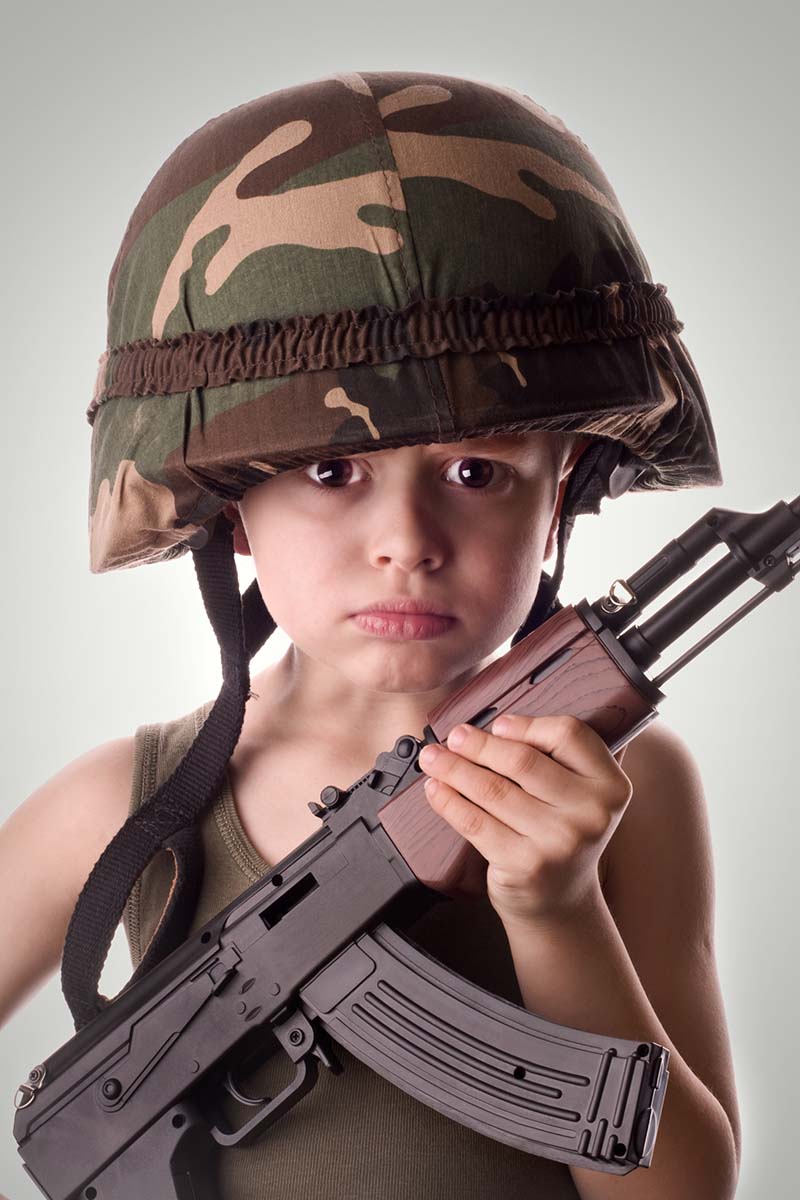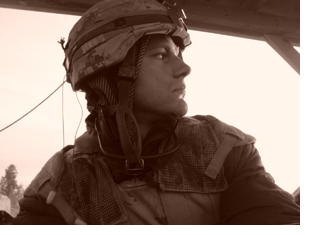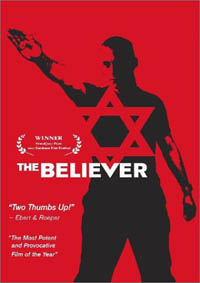 Almost every “child soldier” story that gets told on the big screen makes it seem that child soldiers are exclusive to Africa, but child soldiers can be found around the globe, including the Americas, and their stories are just as terrifying. The biggest challenge to telling their stories is that there are a very small number of people that have had access to the specific communities that create these soldier boys and the rehabilitation centres that attempt to help these little boys reintegrate into society.
Almost every “child soldier” story that gets told on the big screen makes it seem that child soldiers are exclusive to Africa, but child soldiers can be found around the globe, including the Americas, and their stories are just as terrifying. The biggest challenge to telling their stories is that there are a very small number of people that have had access to the specific communities that create these soldier boys and the rehabilitation centres that attempt to help these little boys reintegrate into society.
One of the leading voices on the topic of child soldiers is retired Canadian General Romeo Dallaire, who wrote a memoire on the phenomenon titled, They Fight Like Soldiers, They Die Like Children, after peacekeeping in Rwanda. Another voice worth listening to is a freelance journalist by the name of Luis Chaparro, who recently spent a year in Mexico documenting the dangers of the narco-world, and one of the by-products of that world: soldier boys. Although I have experience interacting with soldier boys in Colombia, my experience is on the rehabilitation side while both General Dallaire and Chaparro have been to the frontlines.
Rwanda
Prior to his arrival in Rwanda during the Rwandan civil war, General Romeo Dallaire had never seen a child soldier, and he described the experience as something he was not trained on. This experience drove General Dallaire to create a new approach to addressing the issue of child soldiers, and he has been directly responsible for the creation of both international policies and international programs that aimed to improve the child soldier situation. In his book, They Fight Like Soldiers, They Die Like Children, General Dallaire highlights the dilemma that many adult soldiers are faced with when facing child soldiers, “when children are shooting at you, they are soldiers, but as soon as they are wounded or killed, they are children once again.” He also discusses how many of those children are desperate boys and girls who are cheap to sustain and who have no real sense of fear, and they are unbound in the perverse directions they can be manipulated through as they have yet to develop a concept of justice. As well, many are ripped away from their families and forced into becoming child soldiers. The book is a must-read, and it provides great insight into a horrifying reality that many children are forced to endure.
Mexico
One of the most shocking stories that Luis Chaparro shared after spending a year in Mexico documenting the dangers of the narco-world was on the Koncrete podcast and it was about a nine-year-old sicario, a child hitman for the cartel. That child had killed quite a few rival cartel members, and it was said that a rival cartel had stated that they were going to kill the child as a means of revenge, and they did not care that this “sicario” was in fact a nine-year-old boy. Outside of that boy committing weapon violence, he was described as liking things that other elementary-aged children his age would like including sweets and toys, and there was even a photo of this little “sicario” and their mom celebrating his ninth birthday. Chaparro also explained the dynamics of the situation and how the parents of these little sicarios, often single moms, knew what was occurring and how it was a problem that disproportionately affecting rural communities. Although this specific story focused on Mexico, Chaparro did mention that the soldier boy phenomenon was not exclusive to Mexico and similar situations could be found across the Americas.
Colombia
Back in 2017, I had a chance to spend some time in Colombia and it was an eye-opening experience. Very little of what we see on narco-themed TV shows reflects modern-day Colombia, but that does not mean it is not dangerous. During my stay, I spent time between Bogota, Capital District and San Gil, Santander, taking part in different activities depending on the city. In Bogota, I had the chance to work alongside support teams that specialized in taking care of elderly women with mental and physical disabilities, recovering substance users, but also soldier boys. The latter was the most shocking. In San Gil, I got introduced to the world of child trafficking for drug and sexual purposes, an experience that had me in a state of limbo.
The boys’ orphanage in Bogota was a place that focused on rehabilitating elementary-aged boys, all of whom were removed from their environments and for extreme reasons, including being soldier boys. It is important to know that Colombian child protection services typically do not get involved in cases that involve children in low-income communities who need to be removed from their families. Not unless the children are arrested by police agencies for weapons violence and drug trafficking. In the case of weapons violence, the go-to weapons were almost exclusively small calibre low-recoil handguns, but knives were not uncommon either.
One outcome that nobody has seemed to discuss about how soldier boys would be rewarded beyond just candy, toys, and drugs for committing weapons violence and delivering drugs, and that reward was having sex acts carried out on them by female sex workers also linked to the cartel. That is how one of the boys at the orphanage had “fathered” a child, in his preteens, and with a woman that was over the age of thirty.
Although these were all highly traumatized and troubled boys, the structure that was provided to them through the orphanage, something that none of them had experienced, changed all of them into high functioning boys. However, the structure that was provided by this orphanage was only temporary, because most of these boys would be removed from the shelter around the age of sixteen and would end up returning to their original environments—reverting back to being the “boys of old”.
My introduction to the world of child trafficking for drug and sex purposes occurred in San Gil, a town known for its extreme sports including white-water rafting, paragliding, and bungee jumping. I had arrived at the bus station in San Gil a few hours past midnight, and I was another fifteen-minute drive away from the town centre where I was staying. From the moment I got off the bus and until getting to my hostel, the entire place had a unique “smell” to it, a rather unpleasant one. The vibrant town centre that was advertised was a ghost town, and every single door and window had steel bar coverings that made breaking into a place impossible. I had to wait a good fifteen minutes before the hostel’s clerk felt comfortable enough to come and open the gates for me. I remember thinking, “Why?”
In the morning, the ghost town centre had been revived into the festive place advertised, and the town center’s mini park was full of youth and occasional police officers that made their “presence felt” rounds. The change was something that one could expect to see on an episode of the Twilight Zone, it was that crazy.
When I went for my morning walk, it did not take long for preteen boys to approach me and say things like, “blanco” and “coke…cola”, essentially trying to sell me drugs. There would also be a few occasions where some “rico suaves” would try start up conversation and offer girls, who looked like they were in their early twenties, and when I passed on their offer, the option to have underage girls was provided. Once again, I passed on the offer, but that is all I could do because fighting the cabrones was not an option, nor was going to the police officers, so there was no way to help any of those girls. I was left in a state of limbo.
The Child Soldier Initiative
Few countries are involved in the global betterment of developing nations to the degree that Canada is involved. One of the latest global betterment programs focuses on implementing the Vancouver Principles on Peacekeeping, and the prevention of the recruitment and use of child soldiers, through the Dallaire Institute for Children, Peace, and Security. The importance of the Institute can not be understated. They collaborated with the International Criminal Court to create its first ever Policy on Children for the Office of the Chief Prosecutor; they deployed the first ever Child Protection Advisor to an African Union-led peacekeeping mission; they contributed to the first ever Joint Doctrine Note in the world on child soldiers, and they were instrumental in the creation of the Vancouver Principles on Peacekeeping and the Prevention of the Recruitment and Use of Child Soldiers. Despite all the progress that has been made since the 1990s, a multifaceted approach to addressing the issue of child soldiers is still required.
The United Nations has adopted the Institute’s action-oriented plan, known as Children’s Rights Upfront Approach, which seeks to prioritize the well-being of children by focusing on international peace and security and making it a priority for all stakeholders in conflict settings. This approach makes it so that there is an exchange of information, resources, strategic objectives, and programs with all stakeholders, all with the intention of preventing the recruitment and use of children as soldiers. While the United Nations has previously highlighted that one in six children, approximately 357 million, live in areas of the world affected by war or conflict, it is important for us not to forget that armed conflicts are not the only environments where children are weaponized. That is why it is important for us to remind ourselves that life outside of Canada and a few other places is not the nice and happy place that we might imagine it to be. The experiences we create when we go on vacation to some of these countries are fairy tales that are not afforded to the children in those very same places, and that is something we must always remember.
[Please note the original story listed the Dallaire Centre of Excellence of the Canadian Armed Forces in error with a link to an older website. This has now been corrected –Editor]


